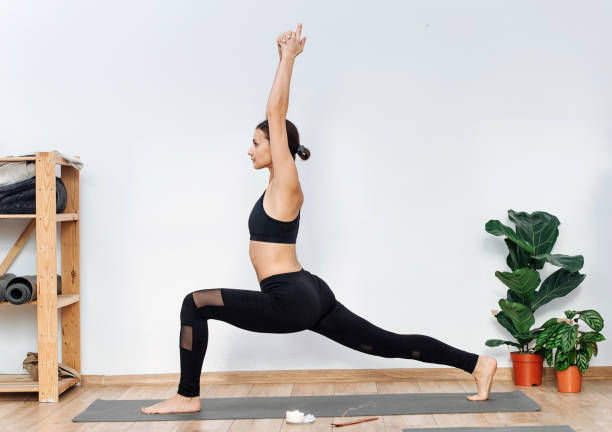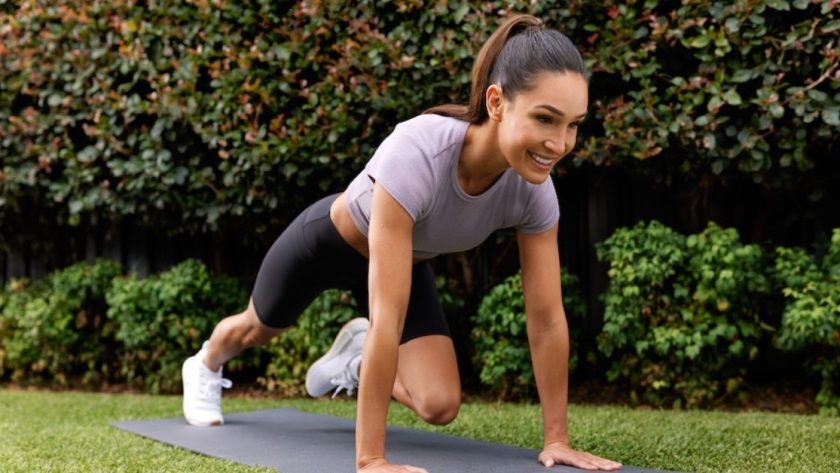Low-impact workouts are highly effective for weight loss because they burn calories while being gentle on your joints, making them accessible to a wide range of fitness levels. Activities like walking, swimming, cycling, and yoga can boost your heart rate and metabolism, promoting fat loss over time.
Additionally, low-impact exercises can be sustained for longer periods, leading to greater calorie burn overall. They also reduce the risk of injury, allowing you to stay consistent with your fitness routine—a key factor in achieving weight loss goals.
Yoga

Yoga offers numerous benefits, making it an excellent low-impact workout for people of all fitness levels. Here are a few reasons why:
1. Improves Strength and Flexibility
Yoga combines bodyweight resistance and stretching, helping you build strength in muscles while enhancing flexibility. Over time, this improves posture, reduces stiffness, and promotes functional movement.
2. Boosts Calorie Burn
While gentle on the joints, yoga can still help burn calories, particularly dynamic styles like vinyasa or power yoga. Even slower-paced practices contribute to weight management by enhancing muscle tone and metabolism.
3. Reduces Stress and Supports Mental Health
Yoga incorporates mindful breathing and meditation, lowering stress levels and promoting a sense of calm. Reduced stress can improve sleep, regulate appetite, and support overall well-being.
4. Enhances Balance and Stability
Many yoga poses focus on core engagement and balance, which strengthens stabilizing muscles and reduces the risk of falls or injuries in everyday life.
5. Aids Recovery and Joint Health
As a low-impact activity, yoga is gentle on the joints and promotes circulation, reducing inflammation and aiding recovery from more intense workouts.
6. Adaptable for All Levels
Yoga is highly versatile, with modifications available for beginners and advanced practitioners alike. This inclusivity allows everyone to benefit from the practice, regardless of fitness level or physical limitations.
Conclusion
Yoga is more than just exercise—it’s a holistic approach to fitness that supports both physical and mental health. Its low-impact nature ensures accessibility while delivering benefits that range from strength and calorie burn to stress reduction and recovery.
Pilates
Pilates is a low-impact workout that delivers remarkable benefits for your overall health, flexibility, and physical fitness. Here’s how it supports your well-being:
1. Builds Core Strength
Pilates focuses on strengthening the core muscles, including the abdominals, lower back, and pelvic region. A strong core improves posture, reduces the risk of back pain, and supports better movement in daily life.
2. Enhances Flexibility and Mobility
The controlled, deliberate movements in Pilates help lengthen and stretch muscles, improving flexibility and joint mobility. This leads to greater range of motion and reduced stiffness.
3. Improves Balance and Stability
Pilates emphasizes body awareness and alignment, which enhances balance and coordination. This is especially beneficial for injury prevention and functional fitness.
4. Supports Joint Health
As a low-impact exercise, Pilates is gentle on the joints, making it an ideal workout for people recovering from injuries or those with arthritis or other joint issues. It strengthens muscles without placing unnecessary stress on your body.
5. Promotes Better Posture
Pilates trains your body to maintain proper alignment, which reduces the risk of chronic pain and improves your overall appearance and confidence.
6. Boosts Mental Focus
Pilates integrates mindfulness and breath control, helping to reduce stress and improve mental clarity. This mind-body connection fosters relaxation while promoting a sense of accomplishment.
7. Aids Weight Management and Muscle Tone
Pilates helps build lean muscle, which increases your resting metabolism and supports weight management. Regular practice can tone and sculpt your body without adding bulk.
8. Adaptable for All Fitness Levels
Pilates offers modifications for beginners and challenges for advanced practitioners, making it accessible and effective for anyone, regardless of fitness level or physical limitations.
Conclusion
Pilates is a versatile, low-impact workout that enhances strength, flexibility, and overall health while being easy on the joints. Whether you’re looking to build core stability, improve posture, or increase flexibility, Pilates provides a balanced and effective way to achieve your fitness goals.
Swimming

Swimming is an exceptional low-impact workout that offers a wide range of physical and mental health benefits. Here’s why it’s a top choice for people of all ages and fitness levels:
1. Total Body Workout
Swimming engages nearly every muscle group, building strength, endurance, and flexibility. Each stroke targets different areas of the body, offering a comprehensive workout.
2. Easy on the Joints
Because it’s performed in water, swimming eliminates the impact on your joints, making it ideal for individuals with arthritis, injuries, or chronic pain. The buoyancy of water supports your body, reducing strain while still providing resistance.
3. Boosts Cardiovascular Health
Swimming is an excellent aerobic exercise that strengthens the heart and lungs, improves circulation, and lowers the risk of heart disease. It enhances cardiovascular endurance without putting stress on your body.
4. Burns Calories Efficiently
Swimming burns a significant number of calories, making it an effective tool for weight management. The water’s resistance increases calorie burn compared to land-based low-impact exercises.
5. Improves Flexibility and Mobility
The dynamic movements required in swimming help stretch and lengthen muscles, increasing flexibility and promoting joint mobility.
6. Builds Lung Capacity
The breathing techniques used in swimming improve lung function and capacity, benefiting overall respiratory health. This is especially helpful for individuals with asthma or other respiratory issues.
7. Reduces Stress and Enhances Mental Health
Swimming promotes relaxation through its rhythmic movements and the soothing effect of water. It can reduce stress, alleviate symptoms of anxiety and depression, and boost your mood.
8. Suitable for All Fitness Levels
Swimming is highly adaptable—whether you’re a beginner looking for a gentle workout or an athlete seeking an intense session, it can be tailored to meet your needs.
9. Promotes Recovery and Rehabilitation
Water provides gentle resistance and reduces body weight load, making swimming an ideal exercise for injury recovery, post-surgery rehabilitation, or managing chronic conditions.
10. Encourages Longevity
Studies show that regular swimmers often experience improved overall health, better physical functioning, and increased life expectancy.
Conclusion
Swimming combines the benefits of strength training, cardiovascular exercise, and flexibility work into one effective, low-impact workout. It’s not only gentle on your joints but also deeply invigorating for your body and mind, making it a great choice for lifelong fitness and well-being.

